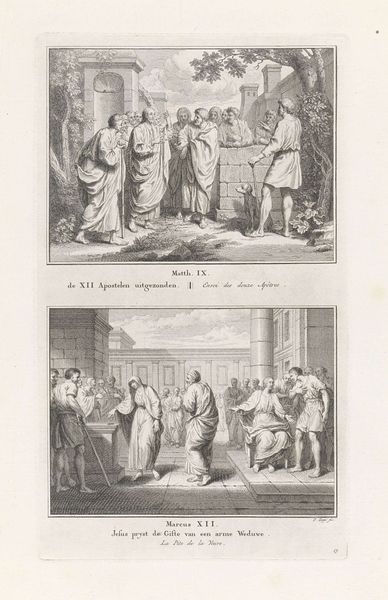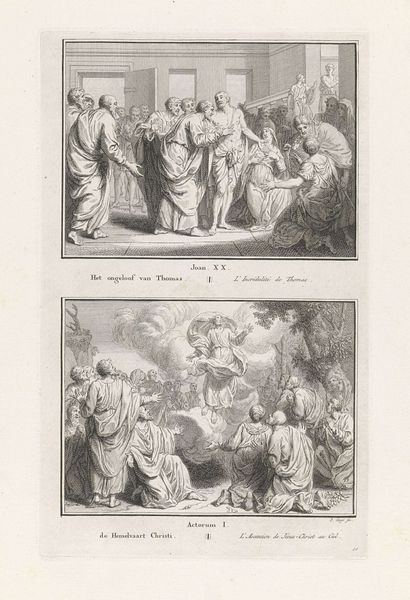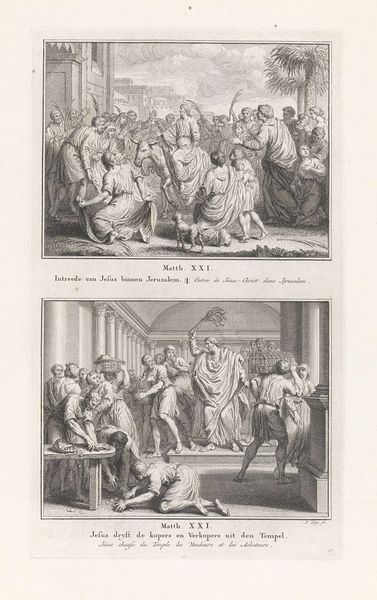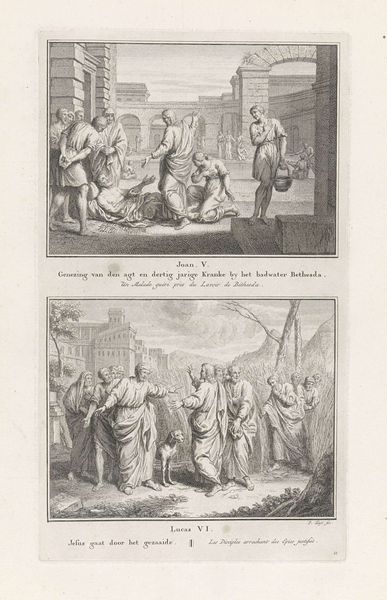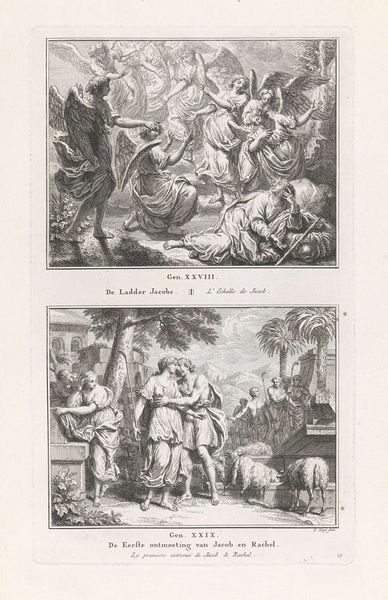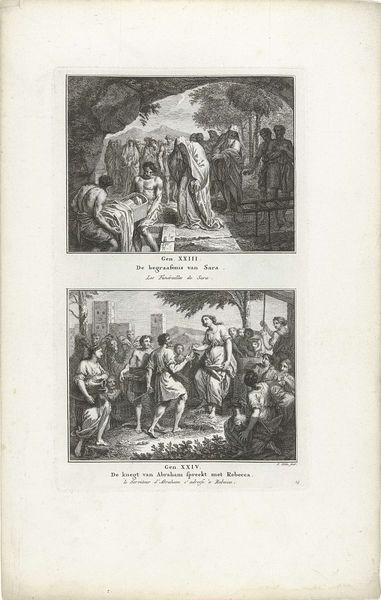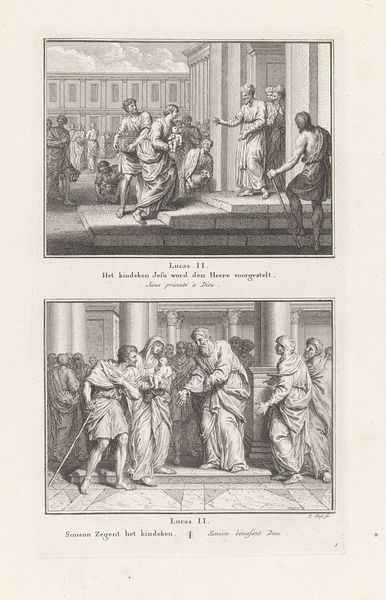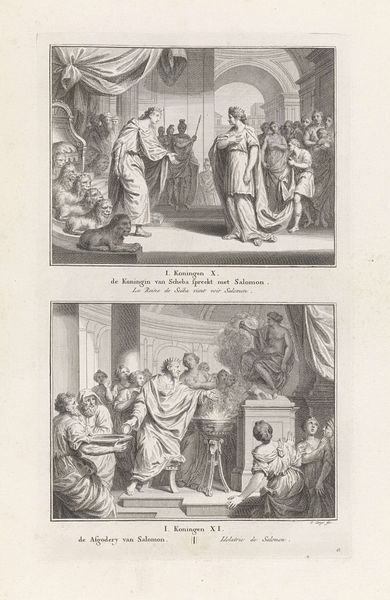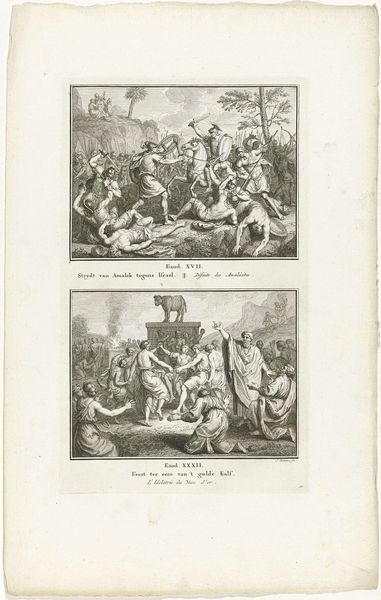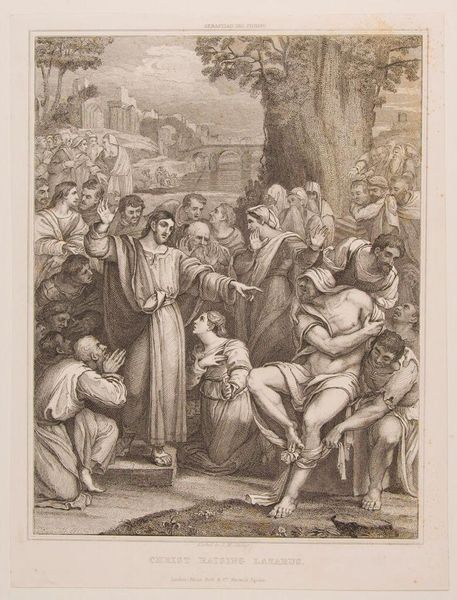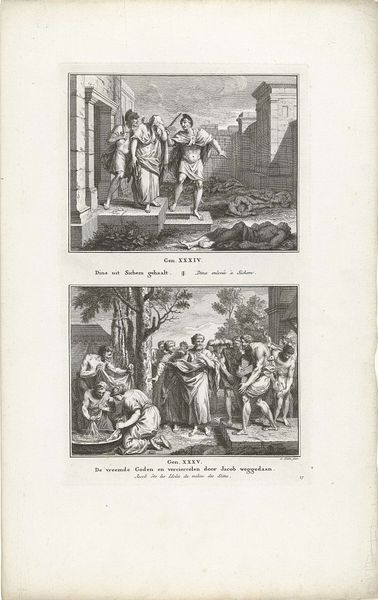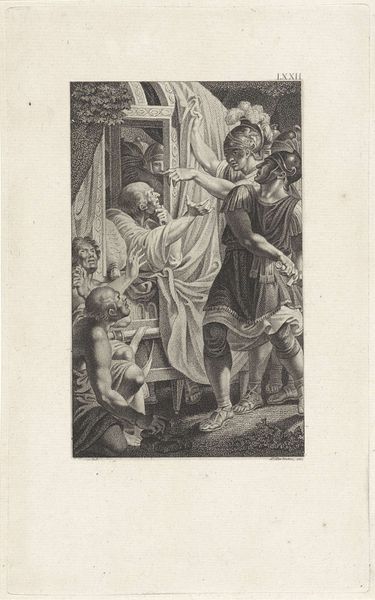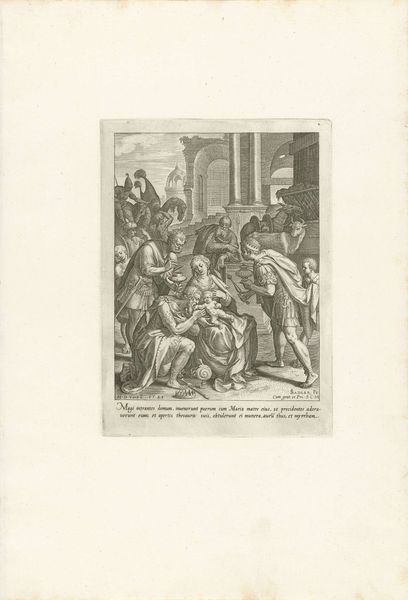
print, engraving
#
narrative-art
#
baroque
# print
#
old engraving style
#
figuration
#
history-painting
#
engraving
Dimensions: height 318 mm, width 187 mm
Copyright: Rijks Museum: Open Domain
Curator: Here we have Pieter Tanjé’s engraving, "Christus geneest twee blinden / Christus roept Zacheüs," created sometime between 1716 and 1791. The print presents two distinct biblical scenes stacked one above the other. What strikes you initially about this work? Editor: The composition immediately catches the eye. It's so clean, almost clinical. The figures are rendered with an incredible, almost austere clarity, and the parallel arrangement creates a powerful visual rhythm. It's an intriguing study in contrasts and echoing forms. Curator: Absolutely. Considering Tanjé's period, the engravings provide insight into societal perceptions of faith, power, and social standing. In the upper scene, we witness the healing of the blind, a representation of divine compassion toward the marginalized, rendered powerfully. Yet these acts of what can only be understood as charity are viewed through a colonial lens that emphasizes the subservience of the 'other' at the time, and this comes off heavily when engaging with these illustrations from a contemporary viewpoint. Editor: Indeed. The lines, although meticulously controlled, do convey an almost overwhelming sense of humility. Each figure seems to occupy a defined space within a structured hierarchy. The precise application of line-work is fascinating; cross-hatching defining volume, light creating subtle drama. How interesting that faith takes form through such measured execution. Curator: These prints were more than just art; they served as visual texts reinforcing existing cultural narratives and are still capable of eliciting responses based on those themes centuries later. Understanding the historical backdrop becomes key to unraveling the message being imparted but more important to revealing their capacity for manipulation. Editor: A perspective that sheds light on the complex interaction of the era's social norms and artistic expression. Now, as we approach the close of our encounter, it's interesting to see these classical values represented using simple methods of construction such as hatching or stark white contrasted against pure line. It certainly gives food for thought on just how complex even a very limited or restrictive framework for an artist may be. Curator: By interweaving faith with the dynamics of visibility and marginalization, this work serves as a visual bridge that allows for dialogue about history, art, and society even in today’s age.
Comments
No comments
Be the first to comment and join the conversation on the ultimate creative platform.
